The production of flax seed, promoted through research at the University of Minnesota, played a factor in Minnesota’s early agricultural history. Flax, while used historically for products as diverse as cloth and for consumption, was/is grown in Minnesota for its seed, otherwise known as flax seed or linseed. Linseed oil is used as a drying vehicle for oil based paints and varnishes. Near to this site there were grain elevators once used to store the linseed, before making its way for further processing. The flax flower and its seeds are represented in the station platform. Abstracted design elements for the light poles at this station suggest agriculture, grain elevators, railroad tracks, grinding stones, machinery, etc. The colors of the platform are based on historical paint colors that were common in this neighborhood in the early 1900's. A design element on the columns harkens to the Witch’s Hat Tower nearby. Located in Tower Hill Park, the tower is a landmark that is visible from both Minneapolis and Saint Paul. The distinctive roof of the tower looks like a witch’s hat. A silhouette of that roof appears on the columns of the station.
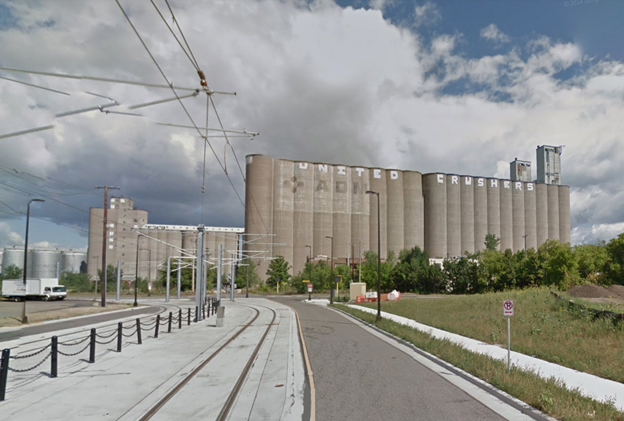
Abandoned grain elevators near the station that may have once housed flaxseed.
Janet Lofquist is a regional and national public artist from Minneapolis. For more than 25 years, she has created artwork for college campuses, libraries, parks and transit and streetscape projects.
Lofquist works in a variety of materials, from metals, to stone to wood and even landscaping. Completed works have ranged in scope from architecturally integrated treatments, sculptural environments, gathering spaces and free-standing sculptures. In her work, Lofquist explores the relationship of site and context, art and architecture/landscape and artist and community. Her process starts with a community conversation as she researches and explores the sites’ historical, cultural and environmental phenomena in order to create a unique sense of place.
She has won numerous grants and awards from Minnesota State Arts Board, Forecast Public Art, the Jerome Foundation and the National Endowment for the Arts.
janetlofquist.com
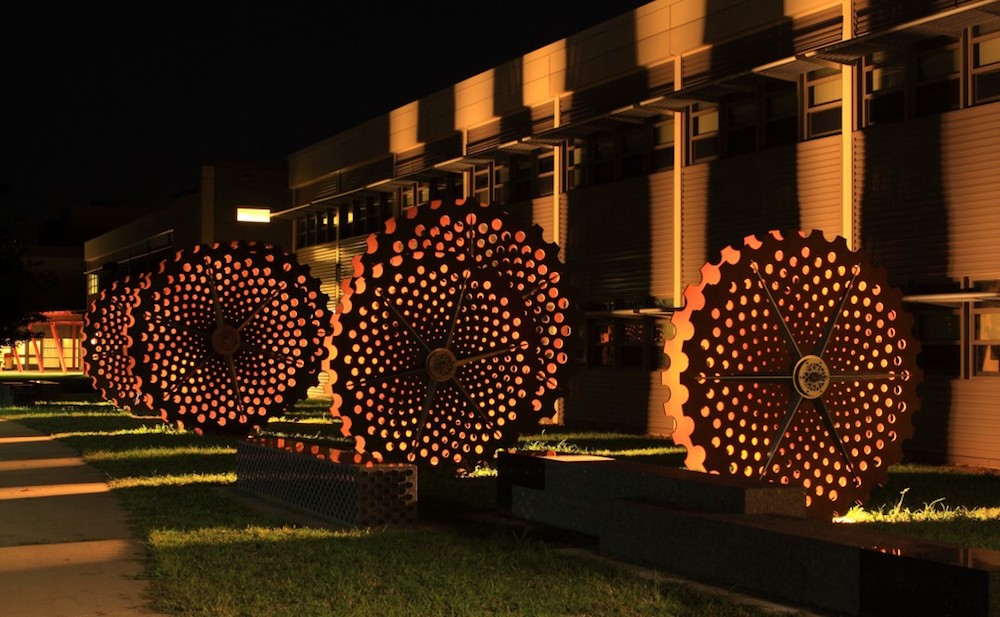
Engage, Goodwin Technical School, New Britain, Connecticut 2013
Flax Seed
Historically, the fiber in flax stems was used to make clothing and fine papers. Ancient Egyptians used flax to make fine linens and fiber flax is still grown in Asia and Europe to make linen. Cigarette paper is a major flax paper product. Today in Minnesota, the seed is the most used part of the plant. Fiber flax varieties are very tall with few branches and low seed production. Seed flax is short, multiple branched and selected for high seed production.
Flaxseed is also known as linseed and is the source of linseed oil, a medium for paints and stains. Linseed oil has also been a major ingredient in the production of linoleum. After the flaxseed has been crushed, to release the linseed oil, the linseed meal is used in food products for animals and people.
Because of its link to good health, flax is becoming a new food in many diets. Bakers and commercial food companies use the meal as a unique ingredient in everything from yeast breads, to bagels and cookie mixes. Not only do muffins and breads baked with flax taste great, but studies also find that these foods provide health benefits. Flax is unique in its high alpha-linolenic fatty acid (ALA) content. ALA is an omega-3 fatty acid, which contributes to good health.
Flax is increasingly used as an ingredient in feeds for better animal health and for enriched food products. Omega-3 enriched eggs from hens fed rations containing flax are also very popular. These eggs contain eight to 10 times more omega-3 fatty acids than regular eggs. Two of the enriched eggs supply more than half the recommended daily intake of omega-3s for adult men and women.
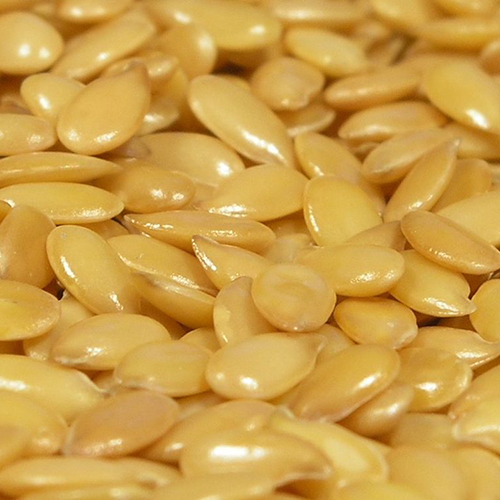
Yellow flaxseed
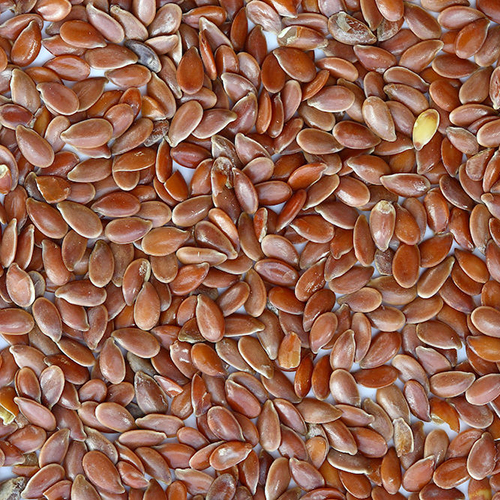
Brown flaxseed
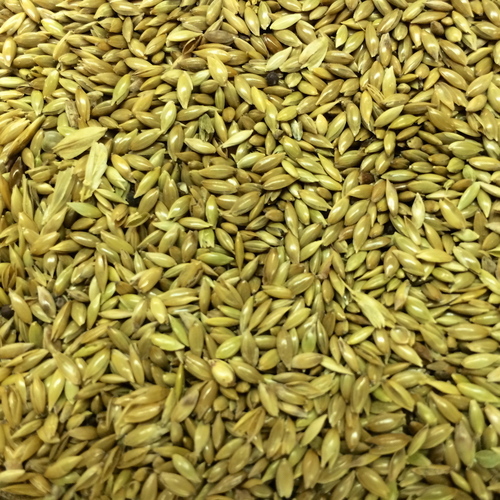
Green flaxseed